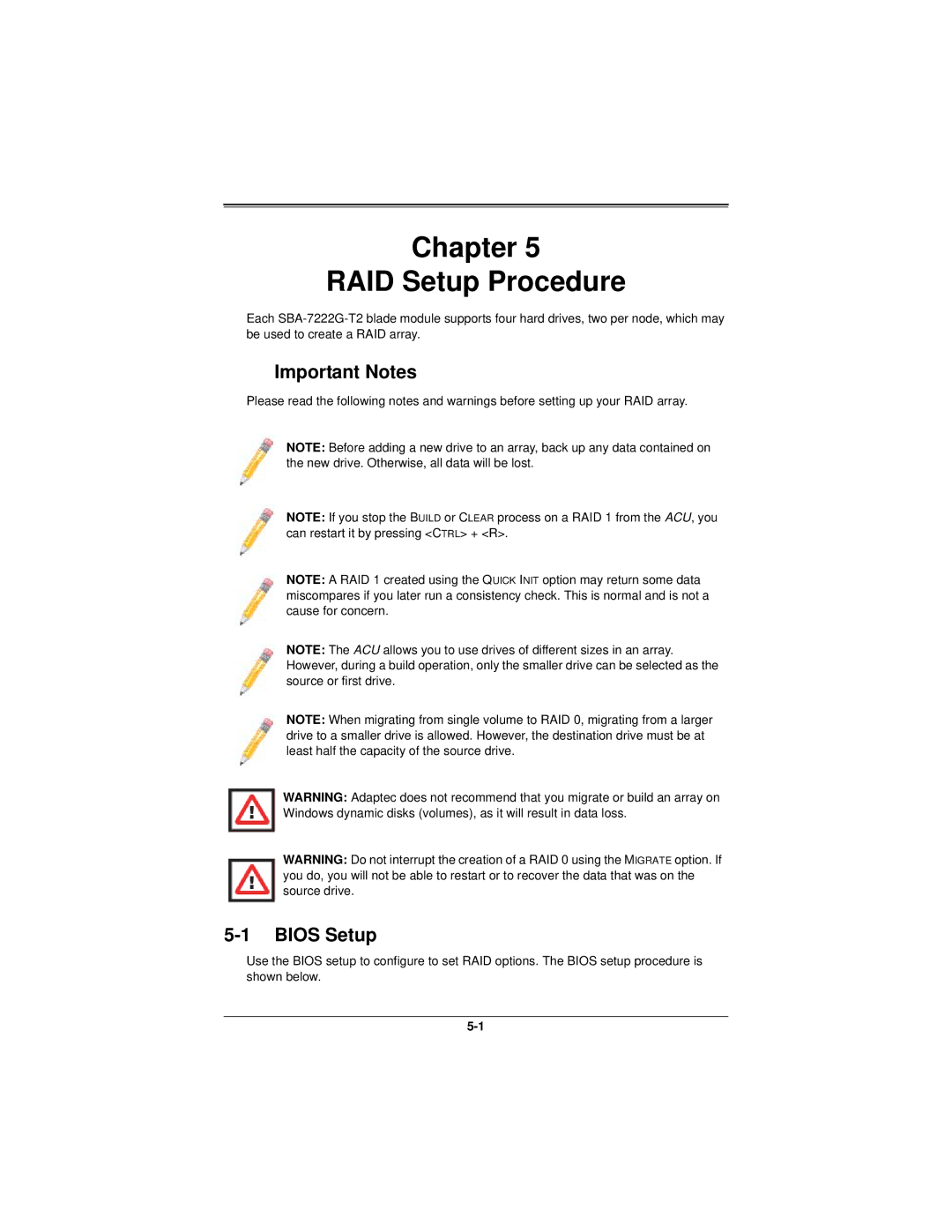
Chapter 5
RAID Setup Procedure
Each
Important Notes
Please read the following notes and warnings before setting up your RAID array.
NOTE: Before adding a new drive to an array, back up any data contained on the new drive. Otherwise, all data will be lost.
NOTE: If you stop the BUILD or CLEAR process on a RAID 1 from the ACU, you can restart it by pressing <CTRL> + <R>.
NOTE: A RAID 1 created using the QUICK INIT option may return some data miscompares if you later run a consistency check. This is normal and is not a cause for concern.
NOTE: The ACU allows you to use drives of different sizes in an array. However, during a build operation, only the smaller drive can be selected as the source or first drive.
NOTE: When migrating from single volume to RAID 0, migrating from a larger drive to a smaller drive is allowed. However, the destination drive must be at least half the capacity of the source drive.
WARNING: Adaptec does not recommend that you migrate or build an array on Windows dynamic disks (volumes), as it will result in data loss.
WARNING: Do not interrupt the creation of a RAID 0 using the MIGRATE option. If you do, you will not be able to restart or to recover the data that was on the source drive.
5-1 BIOS Setup
Use the BIOS setup to configure to set RAID options. The BIOS setup procedure is shown below.
